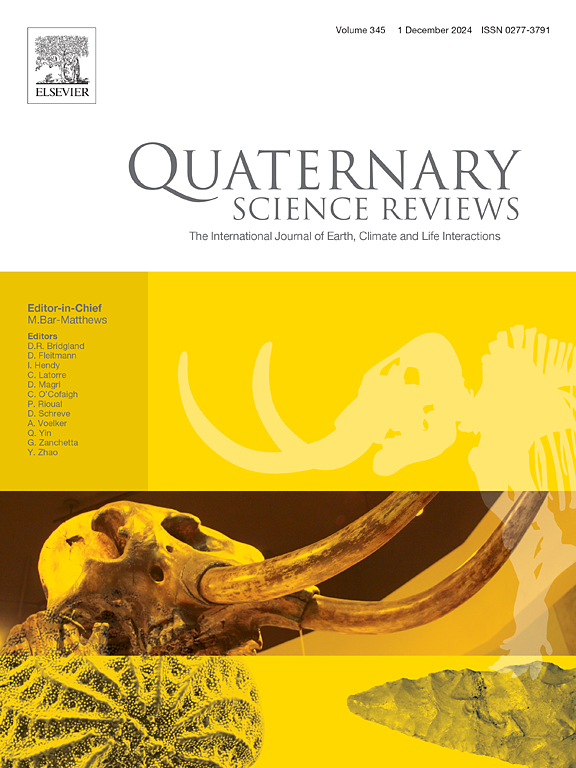Reshaping a woolly rhinoceros: Discovery of a fat hump on its back
IF 3.2
1区 地球科学
Q1 GEOGRAPHY, PHYSICAL
引用次数: 0
Abstract
Until now, a key question in reconstructing the appearance of the woolly rhinoceros has remained open: why did various Paleolithic artists often depict this animal with a hump on its back? Previous findings of mummies of this rhinoceros either had no hump or this area of the carcass was damaged. In this study, we describe the discovery of a subadult Coelodonta antiquitatis mummy (4–4.5 years old) from the permafrost of Yakutia. This is the first time that the presence of a hump in the neck and withers area has been reliably established. The hump of the studied rhinoceros measures 36 cm in length, 13 cm in height, and 14 cm in thickness, and is filled with adipose tissue. The dimensions of the subcutaneous and hump adipocytes probably indicate that the hump was filled with white fat. The presence of a fat hump in the woolly rhinoceros represents a distinctive adaptation that is not typical of the extant large mammals in the northern latitudes and likely contributed to their survival during the harsh winters of the Ice Age. This discovery shows that Paleolithic artists from Chauvet Cave made strikingly accurate depictions of the exterior of a woolly rhinoceros.
重塑毛犀:发现犀牛背上的脂肪驼峰
到目前为止,重建毛犀外观的一个关键问题仍未解决:为什么旧石器时代的各种艺术家经常描绘这种动物的背部有一个驼峰?以前发现的这种犀牛的木乃伊要么没有驼峰,要么躯体的这一区域遭到破坏。在这项研究中,我们描述了在雅库特的永久冻土层中发现的一具亚成犀牛木乃伊(4-4.5 岁)。这是首次可靠地证实颈部和腰部存在驼峰。研究犀牛的驼峰长 36 厘米、高 13 厘米、厚 14 厘米,由脂肪组织填充。皮下脂肪细胞和驼峰脂肪细胞的尺寸可能表明,驼峰内充满了白色脂肪。毛犀牛脂肪驼峰的存在代表了一种独特的适应性,这种适应性在北纬地区现存的大型哺乳动物中并不典型,很可能有助于它们在冰河时期的严冬中生存下来。这一发现表明,来自 Chauvet 洞穴的旧石器时代艺术家对毛犀牛的外部进行了惊人的精确描绘。
本文章由计算机程序翻译,如有差异,请以英文原文为准。
求助全文
约1分钟内获得全文
求助全文
来源期刊

Quaternary Science Reviews
地学-地球科学综合
CiteScore
7.50
自引率
15.00%
发文量
388
审稿时长
3 months
期刊介绍:
Quaternary Science Reviews caters for all aspects of Quaternary science, and includes, for example, geology, geomorphology, geography, archaeology, soil science, palaeobotany, palaeontology, palaeoclimatology and the full range of applicable dating methods. The dividing line between what constitutes the review paper and one which contains new original data is not easy to establish, so QSR also publishes papers with new data especially if these perform a review function. All the Quaternary sciences are changing rapidly and subject to re-evaluation as the pace of discovery quickens; thus the diverse but comprehensive role of Quaternary Science Reviews keeps readers abreast of the wider issues relating to new developments in the field.
 求助内容:
求助内容: 应助结果提醒方式:
应助结果提醒方式:


